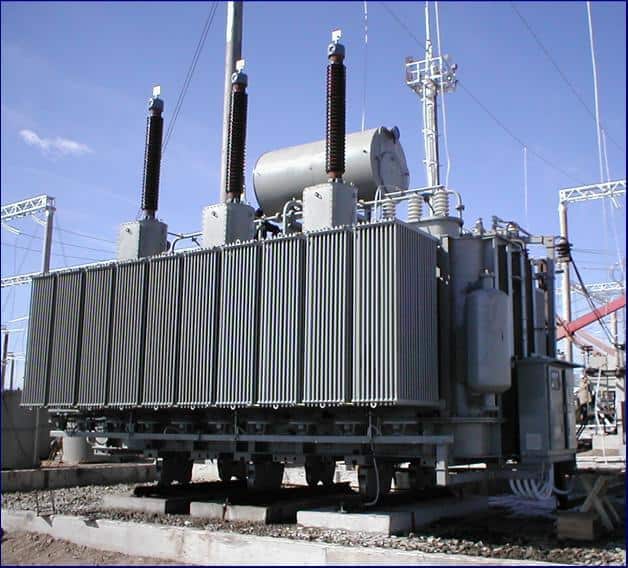Hubbell – Hubbell to Acquire Systems Control
- Leading provider of substation control and relay panels, as well as turnkey substation control building solutions
- Enhances Hubbell’s industry-leading Utility Solutions portfolio
- Attractive growth profile aligned to megatrends in aging infrastructure, grid automation, renewables and electrification
- $1.1 billion purchase price represents ~12x projected 2024 EBITDA multiple
- Transaction to be financed with cash and debt; anticipate adjusted EPS accretion in 2024
Shelton, CT, Oct. 30, 2023 (GLOBE NEWSWIRE) — Hubbell Incorporated (NYSE: HUBB) today announced that it has entered into a definitive agreement to acquire Northern Star Holdings, Inc. (commercially known as Systems Control), a portfolio company of Comvest Partners, for $1.1 billion in cash, subject to customary adjustments.
Systems Control is a leading manufacturer of substation control and relay panels, as well as turnkey substation control building solutions. These highly engineered offerings are mission-critical to grid reliability, enabling utility customers to protect and control substation infrastructure while detecting faults and controlling the flow of electricity. Systems Control estimates 2024 sales of approximately $400 million.
Gerben Bakker, Hubbell’s Chairman, President and Chief Executive Officer said, “This acquisition enhances Hubbell Utility Solutions’ industry-leading franchise across utility components, communications and controls. Systems Control has a strong track record of financial performance and is highly complementary to Hubbell’s portfolio, enabling us to deliver additional value to our core utility customers while enhancing our overall growth and margin profile for shareholders.”
Greg Gumbs, President, Utility Solutions said, “Substation automation is critical to upgrading aged infrastructure and enabling the integration of renewables and electrification on the grid. Systems Control has a proven value proposition, with leading manufacturing quality and engineering expertise driving labor savings for utility customers while enabling them to operate critical infrastructure reliably and efficiently. We are excited to welcome the Systems Control team to Hubbell.”
Transaction Financing and Approvals
The transaction is anticipated to close by the end of 2023, subject to the satisfaction of customary closing conditions, including receipt of required regulatory approvals. Hubbell plans to finance the transaction with a combination of cash on hand and debt.
Advisors
Morgan Stanley & Co. LLC is serving as financial advisor to Hubbell, and Wachtell, Lipton, Rosen & Katz is serving as legal advisor. Harris Williams LLC and Lincoln International LLC are serving as financial advisors to Systems Control, and McDermott Will & Emery LLP is serving as legal advisor.
Conference Call
Hubbell will webcast a conference call to discuss this transaction, along with its third quarter 2023 earnings results, tomorrow at 10:00 AM ET. The live audio of the conference call and accompanying materials will be available and can be accessed by visiting Hubbell’s Events and Presentations section. You can also access this information by going to www.hubbell.com and selecting “Investors” from the options at the bottom of the page and then “Events/Presentations” from the drop-down menu.
SourceHubbell
EMR Analysis
More information on HUBBELL: See the full profile on EMR Executive Services
More information on Gerben W. Bakker (Chairman, President and Chief Executive Officer, HUBBELL): See the full profile on EMR Executive Services
More information on William R. Sperry (Executive Vice President and Chief Financial Officer, HUBBELL): See the full profile on EMR Executive Services
More information on Greg Gumbs (President, Utility Solutions Segment, Hubbell): See the full profile on EMR Executive Services
More information on Northern Star Holdings, Inc. (commercially known as Systems Control): https://www.systemscontrol.com/ + Systems Control is a steadfast partner to utilities, ensuring the quality and reliability of the grid since 1962.
Systems Control designs and manufactures customized, turnkey systems that protect, transmit and distribute energy from source to grid to consumer.
Our approach is simple: design, optimize, manufacture, and integrate the highest-quality, most cost-effective solution possible. From initial concept to final delivery, we perform every step of our process in house, and under one roof. And from introduction to installation, we work hand-in-hand with our customers, assigning dedicated teams to better understand their needs and ensure quality results that exceed expectations.
We’re proud of the role we play in bringing energy to those who need it. We bring positive energy and passion to every challenge. But we don’t just do it with connectors and wires. Our most compelling connections are the relationships we build with our employees, suppliers, customers, and community.
One roof. One goal. Extraordinary customer service that’s powered by people.
- 58 Years
- 400K Sq. feet
- 700+ Employees
- 3 Shifts
More information on Brad Lebouef (Chief Executive Officer, Systems Control): https://www.linkedin.com/in/brad-lebouef-937bbb24/
More information on Comvest Partners: https://comvest.com/ + Comvest Partners is a leading private equity and credit investment firm that has supported the capital needs of North American middle-market companies for more than two decades.
- 20+ Years – Founded in 2000
- $9.5B+ Assets Under Management
- $11.7B+ Capital Invested
- 295+ Total Investments
Comvest Partners is a private investment firm providing equity and debt capital to middle-market companies across North America. Since our founding in 2000, Comvest has invested over $11.7 billion. Today, Comvest has over $9.5 billion of assets under management. Through our private equity, direct lending and special opportunities investment strategies, we offer tailored investment solutions across the capital structure, extensive capital resources, and deep industry and operating expertise that help well-positioned companies successfully achieve their goals for growth.
More information on Michael Falk (Founder and Chief Executive Officer, Comvest Partners): https://comvest.com/team-members/michael-falk/
EMR Additional Notes:
- Substation:
- A power station is where the power is generated. A sub station is where power is split apart, distributed and spread further into the grid.A substation is a part of an electrical generation, transmission, and distribution system.
- Substations contain the specialist equipment that allows the voltage of electricity to be transformed (or ‘switched’). The voltage is stepped up or down through pieces of equipment called transformers, which sit within a substation’s site.
- Transformers (Distribution Transformers and Power Transformers):
- A distribution transformer is the type of transformer that performs the last voltage transformation in a distribution grid. It converts the voltage used in the transmission lines to one suitable for household and commercial use, typically down to 240 volts.
- The transformer is classified into three types based on the voltage level produced: Step down, Step up, and an isolation transformer.
- Transformers changes from high voltage to low voltage, used in homes and businesses. The main function of this is to reduce the voltage to provide isolation between the two windings as primary and secondary. This transformer distributes electricity to remote areas generated from power plants.
- While transformer stations are linked to high/medium-voltage transmission systems, electrical substations are designed to support and transform lower voltages.
- Distribution transformers always operate at a load less the rated full load. Power transformers always operate at full load. Distribution transformers are designed to give maximum efficiency at 60 to 70% of the rated load. Power transformers have maximum efficiency at full load.
- Power Transformers are used in transmission network of higher voltages for step-up and step down application (400 kV, 200 kV, 110 kV, 66 kV, 33kV) and are generally rated above 200MVA.
- Distribution Transformers are used for lower voltage distribution networks as a means to end user connectivity. (11kV, 6.6 kV, 3.3 kV, 440V, 230V) and are generally rated less than 200 MVA.

- Shunt Reactor:
- Shunt reactors (SRs) are used in high voltage energy transmission systems to control the voltage during load variations. Depending on the voltage requirement needs, shunt reactors are switched on or off to provide reactive power compensation.
- A shunt reactor is an absorber of reactive power, thus, increasing the energy efficiency of the system. It is the most compact device commonly used for reactive power compensation in long high-voltage transmission lines and in cable systems. The shunt reactor can be directly connected to the power line or to a tertiary winding of a three-winding transformer. The shunt reactor could be permanently connected or switched via a circuit breaker.
- Shunt reactor is same as power transformer but it has only one winding per phase as compared to power transformer. Shunt reactors are used to increase the power and energy system efficiency as it absorb & compensate the reactive power in cables and long high voltage transmission lines.

- Relay Panels:
- Panel that holds one or more relays that sends power or signal to equipment based upon the input received. You can think of a relay panel kind of like a dispatch service.
- Grid, Microgrids and DERs:
- The power grid is a network for delivering electricity to consumers. The power grid includes generator stations, transmission lines and towers, and individual consumer distribution lines.
- The grid constantly balances the supply and demand for the energy that powers everything from industry to household appliances.
- Electric grids perform three major functions: power generation, transmission, and distribution.
- A microgrid is a small-scale power grid that can operate independently or collaboratively with other small power grids. The practice of using microgrids is known as distributed, dispersed, decentralized, district or embedded energy production.
- Smart Grid is any electrical grid + IT at all levels . Micro Grid is a group of interconnected loads and DERs (Distributed energy resources) within a clearly defined electrical and geographical boundaries witch acts as a single controllable entity with respect to the main grid.
- Distributed energy resources (DERs) are small-scale electricity supply (typically in the range of 3 kW to 50 MW) or demand resources that are interconnected to the electric grid. They are power generation resources and are usually located close to load centers, and can be used individually or in aggregate to provide value to the grid.
- Common examples of DERs include rooftop solar PV units, natural gas turbines, microturbines, wind turbines, biomass generators, fuel cells, tri-generation units, battery storage, electric vehicles (EV) and EV chargers, and demand response applications.
- Distributed energy resources management systems (DERMS) are platforms which helps mostly distribution system operators (DSO) manage their grids that are mainly based on distributed energy resources (DER).
- DERMS are used by utilities and other energy companies to aggregate a large energy load for participation in the demand response market. DERMS can be defined in many ways, depending on the use case and underlying energy asset.


